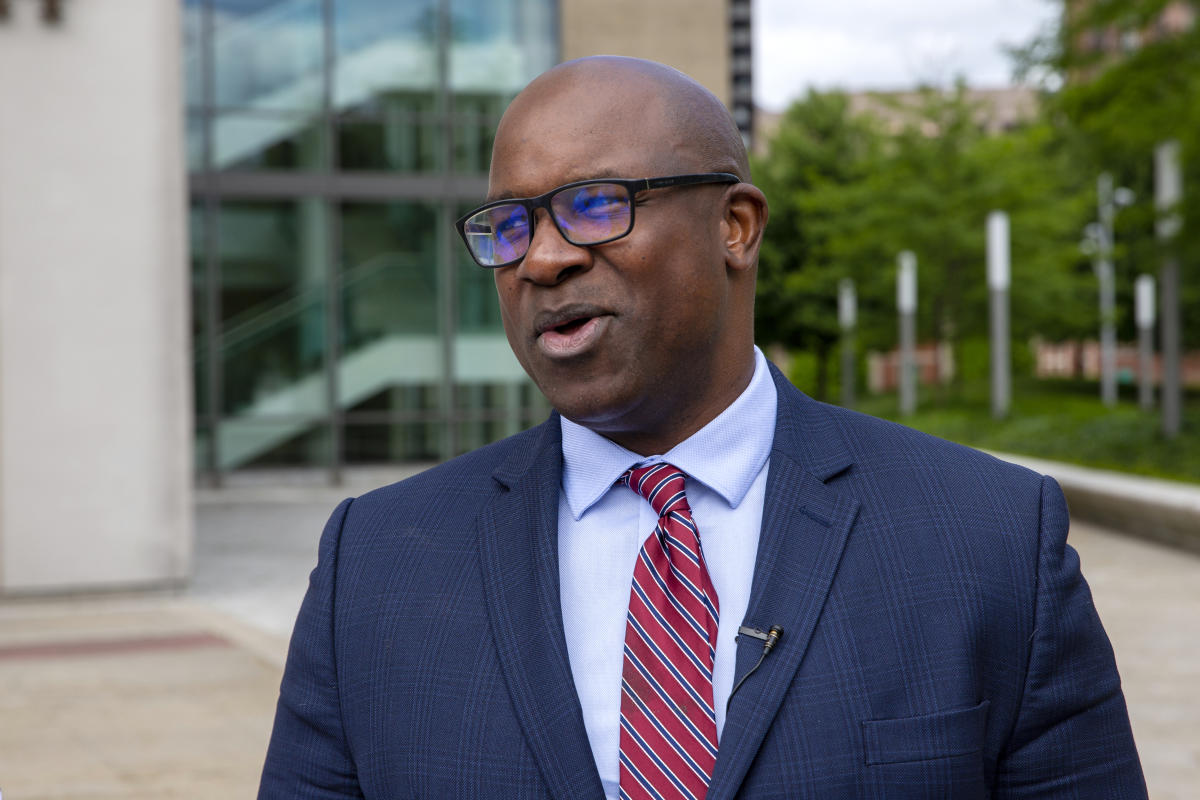WASHINGTON, Nov 29 (Reuters) – The U.S. economy grew faster than initially thought in the third quarter as businesses built more warehouses and accumulated machinery equipment, but momentum appears to have since waned as higher borrowing costs curb hiring and spending.
The quickest growth pace in nearly two years reported by the Commerce Department on Wednesday, however, likely exaggerated the health of the economy last quarter. When measured from the income side, economic activity increased at a moderate pace.
Nevertheless, the mixed report was another reminder that the economy continued to grow despite fears of a recession that have persisted since late 2022.
“No sign of darkening skies for the economy in today’s report, but growth is cooling,” said Christopher Rupkey, chief economist at FWDBONDS in New York. “There’s simply not as much wind in the economy’s sails in the final quarter this year.”
Gross domestic product increased at a 5.2% annualized rate last quarter, revised up from the previously reported 4.9% pace, the Commerce Department’s Bureau of Economic Analysis said in its second estimate of third-quarter GDP. It was the fastest pace of expansion since the fourth quarter of 2021.
Economists polled by Reuters had expected GDP growth would be revised up to a 5.0% rate. The economy grew at a 2.1% pace in the April-June quarter and is expanding at a pace well above what Federal Reserve officials regard as the non-inflationary growth rate of around 1.8%.
The upward revision to growth last quarter reflected upgrades to business investment on structures, mostly warehouses and healthcare facilities. Spending by state and local governments was also revised higher.
Residential investment was also raised, thanks to the construction of more single-family homes. Private inventory investment was higher than previously estimated as wholesalers amassed more machinery equipment. Inventory investment added 1.40 percentage points to GDP growth.
But growth in consumer spending, which accounts for more than two-thirds of U.S. economic activity, was lowered to a still-solid 3.6% rate. The downgrade from the previously estimated 4.0% growth pace was because of cuts to outlays on financial services and insurance as well as used light trucks, likely the result of shortages caused by the recently ended United Auto Workers strike.
U.S. stocks opened higher. The dollar was steady against a basket of currencies. U.S. Treasury prices rose.
MIXED DETAILS
When measured from the income side, the economy grew at a 1.5% rate last quarter. Gross domestic income (GDI) increased at a rate of 0.5% in the second quarter.
After-tax profits without inventory valuation and capital consumption adjustment, which corresponds to S&P 500 profits, increased $126.2 billion, or at a 4.3% rate. Profits rose at a 0.8% rate in the second quarter.
In principle, GDP and GDI should be equal, but in practice differ as they are estimated using different and largely independent source data.
The average of GDP and GDI, also referred to as gross domestic output and considered a better measure of economic activity, increased at a 3.3% rate in the July-September period, quickening from a 1.3% growth pace in the second quarter.
“Subdued growth in GDI, which is theoretically identical to GDP, suggests economic momentum could be softer than the GDP data suggests,” said Gregory Daco, chief economist at EY-Parthenon in New York.
Economic activity appears to have cooled significantly at the start of the fourth quarter, with retail sales falling for the first time in seven months in October. The labor market is also easing. Job growth slowed last month and the unemployment rate rose to a nearly two-year high of 3.9%.
Slowing demand has raised optimism that the Federal Reserve is probably done raising interest rates this cycle, with financial markets even anticipating a rate cut in mid-2024.
Since March 2022, the U.S. central bank has raised its benchmark overnight interest rate by 525 basis points to the current 5.25% to 5.50% range.
The GDP report also confirmed inflation was trending lower, with slight downward revisions to measures watched by the Fed for monetary policy.
“The Fed could find themselves in a sweet spot,” said Jeffrey Roach, chief economist at LPL Financial in Charlotte, North Carolina. “Inflation is trending lower, the consumer is still spending but at a slower pace. The Fed could end its rate-hiking campaign without much pain inflicted on the economy.”
Reporting by Lucia Mutikani; Editing by Chizu Nomiyama and Andrea Ricci
Our Standards: The Thomson Reuters Trust Principles.

Jessica Roberts is a seasoned business writer who deciphers the intricacies of the corporate world. With a focus on finance and entrepreneurship, she provides readers with valuable insights into market trends, startup innovations, and economic developments.

/cloudfront-us-east-2.images.arcpublishing.com/reuters/74QBYKVBCZIJTJ3DQYKT4KV3NE.jpg)





